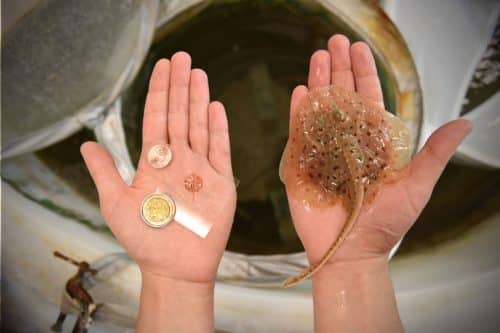The next time you see a rat coming out of a hole, instead of screaming or running away..., start thinking about new technology!

By: Ziv Kohani
Researchers from the WYSS Institute - Harvard University's Biology-Inspired Engineering Institute - have developed, inspired by the rat, a tiny stingray fish that is half animal and half machine. The fish consists of genetically modified rat muscle cells. The muscle cells are what actually allow the fish's wings to move in response to flashes of light. The researchers were able to guide the artificial production through an underwater obstacle course using only flashes of light.
The researchers assembled the artificial production from a skeleton, loaded with natural gold, and covered it with a flexible layer of polymer, on which they printed 200,000 rat heart cells called cardiomyocytes (muscle cells that create the contraction/relaxation of the heart muscle). Each cell is genetically engineered to have the ability to respond to light. The researchers "tuned" the cells to shrink in response to flashes of light and thus, production took off.
A robot about a centimeter long
With a total size of a centimeter or so, the engineered production successfully passed an underwater obstacle course while being guided by flashes of light. The researchers reported that the light beam was able to produce activity, including speed, distance and displacement, while maintaining durability and stability, at a higher level than other bio-hybrid systems.
As nice as it is to drive production through an obstacle course, the real reason for the research is more significant, tissue engineering, which allows controlling the activity of heart cells, as in the case of this study, and can lead to improvements in the creation of an artificial heart.
In addition, the ability to develop smarter artificial beings is important, which actually paves the way for synthetic cognition. I mean, artificial production, so tiny, is actually opening a door to a crazy future.
to the notice of the researchers
More of the topic in Hayadan:
Development of an integrated circuit from bacteria
Walking on water - the robotic gospel
A robotic leapfrog inspired by the frog
Billy and Charlie go big

3 תגובות
So there is no chance of its application in the field of robotics?
א
This machine was created for one purpose: to test the activity of an artificial heart composed of engineered tissues.
Of course, nothing was said about that. What they did say is this: we attached artificial tissues to pieces of plastic and metal and called it a "robot". (They have already done this, before them. There is nothing new under the sun)
How long does such a machine survive before the muscle cells rot like any flesh not attached to a living body?